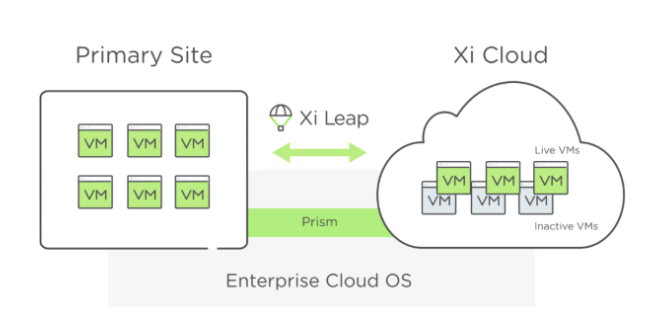
How Hyperconverged Technologies Simplify the Management of your Infrastructure Stack
- Cloud networking
- February 19, 2019
- RSS Feed
As hybrid cloud and multicloud strategies become the norm for enterprise businesses, the new wave of technology brings with it the complexities of managing, operating, and architecting IT environments.
When it comes to staying competitive in our data-driven, cloud-first world, hybrid cloud and multicloud strategies are key – and enterprises are clearly jumping on board. In fact, according to IDG Connect and Rightscale’s 2018 survey, around 71 percent of companies were hybrid, while 81 percent said they ran multicloud environments.
This movement has brought with it a shift in focus from managing infrastructure to managing applications. A realisation among enterprises is that legacy infrastructure is no longer well-suited to the growing demands of modern business applications – storage, servers, and networks are operating in isolation. This makes each step of the ordering, deploying, and managing process of each individual environment difficult, requiring multiple resources operating in silos.
There’s far too much time being spent keeping the lights on.
As the continuous stream of IT hardware and software enhancements becomes even more complex, it becomes far more difficult for organisations to keep on top of managing an infrastructure stack. Consumers of digital technology are already looking at new ways of accessing, assembling, and paying for their on-premises infrastructure that give them more control, automation, and simplicity over this process.
An all-encompassing solution is needed.
Hybrid cloud can be especially challenging in terms of design and management because virtualisation technology, operating environments, and APIs aren’t standardised across every cloud environment – there are different requirements depending on cloud choice.
Take the following leading hybrid cloud use cases: capacity bursting, test/development, data analytics, and business continuity/disaster recovery. Without interoperability and integration, a consistent and sustainable hybrid cloud deployment, that doesn’t sacrifice network design and performance, poses a significant challenge. These are the challenges that have been the catalyst for hyperconverged infrastructure technologies to emerge.

Hyperconverged Infrastructure Technologies
Hyperconverged infrastructure (HCI) technologies create flexible building blocks that replace legacy infrastructure. Using HCI enables you to combine data centre hardware – using locally attached storage resources – with intelligent software.
These technologies essentially harmonise and abstract the critical elements of your infrastructure so that the complexity of managing your hardware is removed and you can focus on running the applications and services that are critical to your business.
Making hybrid cloud and multicloud strategies even easier to handle, HCI providers like Nutanix offer platforms like Xi Cloud, a service that unifies your private and public environments. This enables you to easily manage your legacy and native cloud applications from one management layer. What’s more is that, if you’re using XI Cloud, environments can be instantly provisioned and automatically configured using the same Cloud OS constructs as your Enterprise Cloud instance.
Automated Disaster Recovery
We all thought Disaster Recovery (DR) was easy to set up and manage. DR can be an expensive service you never want to use but is necessary for protecting your business. To achieve DR protection, you actually have to manage multiple tasks and services, you have to: provision a secondary site, install a DR appliance, set up DR automation, and configure the recovery site with the needed networking and security policies. That’s a lot for any organisation to take on.
Closing any gaps for potential critical error is key to ensuring your DR doesn’t fail when you need it most. Within the Nutanix Xi Cloud suite, Xi Leap is a valuable enterprise service – it’s a built-in leap disaster recovery system that removes the need to rely on disapparate clouds or configure multiple solutions to protect Virtual Machines (VMs).
This turnkey integrated service rapidly protects the applications and data in your environment without the need to purchase and maintain a separate infrastructure stack for disaster recovery. You simply select VMs for protection and these are replicated in the background – ready to be recovered in the public environment in the event of a site failure.

For an enterprise business, this offers a whole new level of simplicity, integration, and convenience around managing DR. With Megaport connectivity to Nutanix now available, you can connect from hundreds of data centres to Xi Cloud complimenting the simplicity of Xi Leap by spinning up Virtual Cross Connects between on-premises instances and Xi Cloud.
If you want to learn more about hyperconverged infrastructure technologies and how Megaport connectivity to Nutanix could help your business, visit our webpage. For information on Megaport’s recent partnership with Nutanix, read our press release here.


